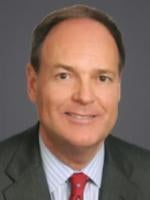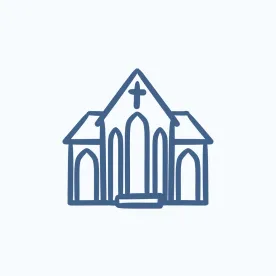Alaska has joined a growing number of states addressing the thorny issue of the size and density of religious gatherings during the COVID-19 health crisis. Like other states, Alaska has attempted to balance the constitutional rights of free exercise of religion and peaceable assembly with legitimate public health concerns warranting the practice of social distancing.
At the same time, Alaska has provided detailed supplementary guidance to Health Mandate No. 5 (previously issued on March 19, 2020) regarding a long list of medical procedures that may be determine whether they are considered “non-urgent or elective” and therefore require postponement or cancellation to help prevent the spread of COVID-19. Recently, however, Alaska issued Health Mandate No. 15 to allow certain non-urgent health care to resume effective April 20, 2020.
Religious Gatherings
On April 7, 2020, Alaska waded into the fray when Commissioner Adam Crum of the Alaska Department of Health and Social Services and Dr. Anne Zink, Chief Medical Officer of the State of Alaska, issued COVID-19 Health Alert No. 11 as a safety guideline to supplement Health Mandate No. 11 (issued March 27, 2020), which had prohibited “public and private gatherings of non-household members, regardless of the number of people involved,” including weddings, faith gatherings, graduations, and funeral events.
The new health alert sought to address the issue of religious gatherings under Mandate 11 by clarifying that “the following practices would be allowed for places of worship including churches, synagogues, mosques, temples and other similar religious facilities of any faith:
- Live-streaming of religious services at their place of worship (absent the congregation)” is allowed as long as there is no in-person group greater than 10 present, social distancing of at least 6 feet is observed (with 10 feet between singers), and others present wear at least cloth face masks;
- Drive-in religious services, “where participants gather in their vehicles near the religious facility and participate in the service together by remote means,” are permitted, “subject to the following requirements, which are intended to protect public health, safety and welfare:
- Participants “must remain in their vehicle at all times;
- Only household members are allowed in each vehicle;
- Vehicles must be parked with six feet of separation between vehicles;”
- “Participants may not interact physically with clergy, staff, or participants in other vehicles. This includes, but is not limited to, collecting donations by basket or plate;
- Social distancing of six feet or more is used”
- Easter basket assembly, whereby faith-based groups were permitted to “distribute Easter baskets” pursuant to specific health and social distancing requirements.
Non-Urgent or Elective Medical Procedures
Pursuant to Health Mandate No. 5.1, also issued on April 7, 2020, the state reiterated its mandated cancellation or postponement by all patients, providers, hospitals, and surgical centers of all “non-urgent or elective procedures,” including “pre-scheduled surgeries deemed non-essential,” until June 15, 2020, so as to “decrease the overall impact on the Alaska health care structure and also to preserve personal protective equipment.” “This mandate does not apply to surgical cases coming through the emergency room or for an existing hospitalized patient.”
The previously issued Health Mandate No. 5 (March 19, 2020) required patients, providers, hospitals, and surgical centers to postpone or cancel non-urgent or elective procedures in order help prevent the spread of COVID-19 but failed to define terms or state a deadline. In addition, consistent with new Centers for Disease Control and Prevention (CDC) guidance, this updated health mandate requires the postponement of all routine dental and eye care visits.
Under Mandate 5.1, the terms “non-urgent or elective” include, but are not limited to, the procedures described on Attachment C—”Non-Urgent or Elective Procedures,” which generally references the American College of Surgeons Guidelines for Triage of various health conditions during the COVID-19 outbreak. Included within the list of non-urgent or elective procedures are the following:
- Non-urgent breast cancer treatments
- Non-urgent cancer surgery considerations
- Cardiac surgery considerations
- Colorectal cancer
- Emergency general surgery
- Gynecological surgeries
- Metabolic and bariatric surgery
- Neurosurgery
- Ophthalmology
- Orthopaedic procedures
- Otolaryngology
- Pediatric surgery
- Plastic surgery
- Thoracic cancer surgery
- Urology
- Vascular surgery
To the extent that the terms “non-urgent or elective” are not fully defined, the mandate directs “that each medical office, clinic, surgical center, and hospital create a physician task force to evaluate all proposed procedures and surgeries on a case-by-case basis to determine if they are non-urgent and elective or can be deferred, and the physician task force will make a determination on all borderline procedures or surgeries for each patient.”
Alaska Health Mandate No. 15
About a week after Mandate No. 5.1 was announced, Alaska issued Health Mandate No. 15 on April 15, 2020, which loosened restrictions on urgent and emergent, as well as non-urgent and non-emergent elective care. That mandate stated that changes were warranted as “the benefits of suspension must also be balanced with delayed health care and other health outcomes.” Mandate No. 15 becomes effective in phases, with Section II having taken effect on April 20, 2020, and Section IV due to take effect on May 4, 2020. The new mandate applies to a wide range of healthcare providers as more particularly stated in Section I of the mandate.
Effective April 20, 2020, healthcare facilities and providers listed in Section I may resume services that “require minimal protective equipment” and follow certain guidance, including that providers “deploy universal masking procedures in coordination with the facility infection control program. This may be a combination of cloth face coverings (for employees not present for provision of services or procedures, such as front desk staff) and surgical masks for those involved in non-aerosolizing direct-patient care.” In addition, “regardless of symptoms, all health care facilities should screen all patients for recent illness, travel, fever, or recent exposure to COVID-19, and to the extent that is possible, begin testing all admitted patients.” Further, the mandate advises that “every effort shall be made to minimize aerosolizing procedures.”
Under the mandate, “other urgent or emergent procedures with an increased risk of exposure, such as deliveries, dental work, aerosolizing procedures such as suctioning, intubation, and breathing treatments, should have patients tested for SARS-CoV-2 [the virus that causes COVID-19] prior to the procedure or birth, to the extent that is reasonably possible, after considering available testing capacity and any other relevant constraints. In the alternative, clinicians should use rigorous screening procedures and treat suspicious patients as if they are positive for COVID-19.”
Importantly, the mandate places a duty on the provider to “ensure the health considerations of staff and patients. This includes the health of the provider, ensuring providers not come to work while ill, minimizing travel of providers, and adequate personal protective equipment. They are also encouraged to utilize the following means of protection:
- Pre-visit telephonic screening and questionnaire.
- Entry screening.
- Lobbies and waiting rooms with defined and marked social distancing and limited occupancy.
- Other personal and environmental mitigation efforts such as gloves, exceptional hand hygiene, environmental cleaning, and enhanced airflow.”
Under Section III of the mandate, healthcare services that are “urgent or emergent” will be allowed to continue, but with the enhanced screening and safety measures listed in Section II. A proviso for the continuance of such services is that “all patients coming to surgery should be tested for SARS-CoV-2 within 48 hours of their procedure. If positive, all procedures should be considered for delay, and specifically those procedures not urgent or emergent, as defined by the American College of Surgeons (ACS), should be postponed or canceled. If a facility is unable to test patients within 48 hours of their procedure, facilities should use rigorous screening procedures and treat suspicious patients as if they are positive for COVID-19.”
Section IV of the mandate states that the State of Alaska will allow “non-urgent/non-emergent elective services” that “cannot be delayed beyond eight weeks without posing a significant risk to quality of life” to resume on May 4, 2020, “if the following conditions are met:
Finally, while the mandate also loosened the directive in Health Mandate No. 12 so as to permit patients to travel for medical procedures and healthcare services within Alaska as a critical personal need and stated that travel may be arranged on behalf of individuals who must travel to receive medical care, such persons must be able to return home following medical treatment or must arrange for their own accommodations if they are unable to return home. The mandate states that “every effort should be made to minimize physical interaction and encourage alternative means such as telehealth and videoconferencing. For many licensed health care professionals, this will mean continued delays in care or postponing care.” The mandate refers interested parties to CDC guidance for dental practitioners, dialysis centers, and ambulatory care.
- Health care delivery can meet all of the standards outlined in Section II of this mandate.
- Health care is delivered by a provider listed in statute (see Section I).
- Health care can be safely done with a surgical mask, eye protection and gloves.
- If the procedure puts the health care worker at increased risk such as deliveries, dental work, or aerosolizing procedures such as suctioning, intubation, or breathing treatments then a negative PCR for SARS-CoV-2 must be obtained within 48 hours prior to the procedure.
- There are to be no visitors in health care facilities except for: end-of-life visits; a parent of a minor; a support person for labor and delivery settings; and only one (1) spouse or caregiver that resides with the patient will be allowed into the facility during the day of a surgery or procedure and at the time of patient discharge to allow for minimal additional exposure. If a caregiver does not reside with the patient, they can be with the patient at the time of discharge. Any of the allowed visitors must wear a fabric face covering.
- Workers must maintain social distancing of at least six feet from non-patients and must minimize contact with the patient.
- Exceptional environmental mitigation strategies must be maintained, including the protection of lobbies and front desk staff.
- Unlicensed assistive personnel necessary to procedures under this section may be included in service delivery.”




 />i
/>i
